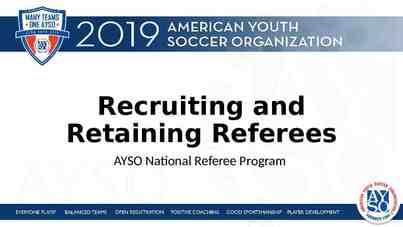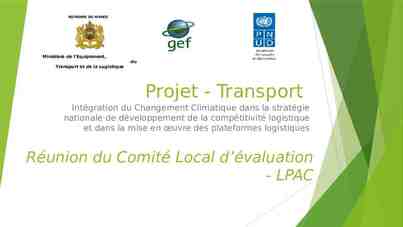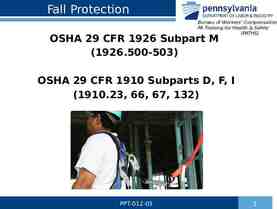Hazardous Materials Awareness N.F.P.A. 472 – 2013 Chapter 4 June 01,
30 Slides6.00 MB

Hazardous Materials Awareness N.F.P.A. 472 – 2013 Chapter 4 June 01, 2016 Connecticut Fire Academy

Analyze the Incident Collecting Hazard Information Identify three methods for determining the appropriate guide page for a specific hazardous Material. NFPA 4.2.3(1) Connecticut Fire Academy

Analyze the Incident Collecting Hazard Information 1. Yellow Pages 4 digit UN/NA ID Number 2. Blue Pages Name of Material 3. Table of Placards When UN/NA number or Material Name unavailable but placard is visible NFPA 4.2.3(1) Connecticut Fire Academy

Analyze the Incident NFPA 4.2.3(1) Connecticut Fire Academy

Analyze the Incident Informational Pages Front of Book How To Use the ERG Table of Contents Safety Precautions Hazard Classification Table of Placards Rail / Road ID Chart GHS Class & Labeling Intermodal Codes Pipeline Resources NFPA 4.2.3(1) Note: In the 2016 ERG White pages are in new locations from 2008 and 2012: Additional information added BEFORE AN EMERGENCY – BECOME FAMILIAR WITH THIS GUIDEBOOK! In the U.S., according to the requirements of the U.S. Department of Labor’s Occupational Safety and Health Administration (OSHA, 29 CFR 1910.120), and regulations issued by the U.S. Environmental Protection Agency (EPA, 40 CFR Part 311), first responders must be trained regarding the use of this guidebook. RESIST RUSHING IN ! APPROACH INCIDENT FROM UPWIND STAY CLEAR OF ALL SPILLS, VAPORS, FUMES, SMOKE AND SUSPICIOUS SOURCES Connecticut Fire Academy

Analyze the Incident Informational Pages Back of Book Note: In the 2016 ERG White pages are in new locations from 2008 and 2012: Additional information added User’s Guide’ Guidebook Contents BEFORE AN EMERGENCY – BECOME FAMILIAR Intro to Isolation Table WITH THIS GUIDEBOOK! In the U.S., according to the requirements of the U.S. Department of Labor’s Occupational P.P.E. Safety and Health Administration (OSHA, 29 CFR 1910.120), Fire & Spill Control and regulations issued by the U.S. Environmental Protection Agency (EPA, 40 CFR Part 311), first responders must be B.L.E.V.E. Chart trained regarding the use of this guidebook. RESIST RUSHING IN ! Terrorism APPROACH INCIDENT FROM UPWIND STAY CLEAR OF ALL SPILLS, VAPORS, FUMES, I.E.D. Chart SMOKE AND SUSPICIOUS SOURCES Glossary of Terms Emergency Phone Numbers NFPA 4.2.3(1) Connecticut Fire Academy

Analyze the Incident Four Digit ID Number – Placard – Orange Panel – Shipping Papers – Packaging – “P” Indicates Polymerization Hazard For Spill / No Fire and “Highlighted” Go To “GREEN PAGES Yellow Pages Numerical Listing Connecticut Fire Academy

Analyze the Incident Name of Material – Placard – Shipping Papers – Packaging – “P” Indicates Polymerization Hazard For Spill / No Fire and “Highlighted” Go To “GREEN PAGES Blue Pages Alphabetical Listing NFPA 4.2.3(1) Connecticut Fire Academy

Analyze the Incident Guide Numbers Remember! It’s called a “Guidebook – Potential Hazards Because it’s only a “Guide” – Health – Fire / Explosion – Public Safety – Protective Clothing – Evacuation – Emergency Response – Fire – Spill or Leak – First Aid NFPA 4.2.3(1) Connecticut Fire Academy

Analyze the Incident Table of Isolation & Protective Action 1. Id. # Name of Material – Numerical Order – Small / Large Spills – First Isolate – Protect Downwind – Day / Night 2. Table of Water Reactive - TIH Gases 3. Six Common TIH Gases – TIH Gases NFPA 4.2.3(1) Connecticut Fire Academy

Analyze the Incident Table 1 TABLE 1 - Initial Isolation and Protective Action Distances suggests distances useful to protect people from vapours resulting from spills involving dangerous goods that are considered : toxic by inhalation (TIH), chemical warfare agents and materials that produce toxic gases upon contact with water. In this table, the substances are presented in numerical order of their ID numbers. An asterisk (*) next to the ID number indicates to consult Table 3 for more information. Connecticut Fire Academy

Connecticut Fire Academy

Analyze the Incident Table 1 This table provides, for small and large spills, the distances for: The Initial Isolation Zone and, The suggested Protective Action Zone, downwind, for day and night. The distances show the areas likely to be affected during the first 30 minutes after the materials are spilled, and this distance could increase with time. The responders must choose a protective actions: evacuation, shelter in place or a combination of both (see page 288 of the ERG2012). Connecticut Fire Academy

Analyze the Incident Small and Large Spills The definitions are as follow: Small Spill: A spill that involves quantities that are less than 208 litres (55 U.S. Gallons) for liquids and less than 300 kilograms (660 pounds) for solids. Generally involves a single small package, a small cylinder, or a small leak from a large package. Large Spill: A spill that involves quantities that are greater than 208 litres (55 U.S. Gallons) for liquids and greater than 300 kilograms (660 pounds) for solids. Generally involves a spill from a large package, or multiple spills from many small packages. For any intermediate quantity, the distances would need to be estimated between the distances provided for small and large spills. Connecticut Fire Academy

Analyze the Incident Initial Isolation Zone Defines an area SURROUNDING the incident in which persons may be exposed to dangerous (upwind) and life threatening (downwind) concentrations of material. Connecticut Fire Academy

Analyze the Incident Protective Action Zone Defines an area DOWNWIND from the incident in which persons may become incapacitated and unable to take protective action and/or incur serious or irreversible health effects; For practical purposes, the Protective Action Zone is a square, whose length and width are the same as the downwind distance shown in Table 1 (see diagram in the following page); Connecticut Fire Academy

Analyze the Incident Protective Action Zone The shape of the area in which protective should be taken actions (the Protective Action Zone) is shown in the figure below. Connecticut Fire Academy

Analyze the Incident Protective Action Zone It is important to note that Protective Action Zones do not only depend on the mere presence of gases/vapours but mainly on its concentration in the air : During the day, there is an increase of the atmospheric disturbances creating a greater dispersion (dilution) of the gases/vapours, which results in a weaker toxic concentration in the air and thus requires a smaller Protective Action Zone than at night. During the night, the gases/vapours will calmly dissipate. This will result in a higher toxic concentration in the air and consequently, necessitate a greater Protective Action Zone. Connecticut Fire Academy

Analyze the Incident Table 2 TABLE 2 – Water-Reactive Materials which Produce Toxic Gases contains: A list of materials which produce large amount of Toxic Inhalation Hazard (TIH) gases when spilled in water and identifies the TIH gases produced. The substances are presented in numerical order of their ID Numbers. These Water Reactive materials are easily identified in Table 1 as their name is immediately followed by (when spilled in water). Connecticut Fire Academy

Connecticut Fire Academy

Analyze the Incident Table 2 Important: Some Water Reactive materials are also TIH materials themselves (e.g., Bromine trifluoride (ID No. 1746)). In these instances, two entries are provided in Table 1: 1 One for when spilled on land and, The other for when spilled in water. If the Water Reactive material is NOT a TIH and this material is NOT spilled in water, Table 1 and Table 2 do not apply and safety distances will be found within the appropriate ORANGE guide. Connecticut Fire Academy

Analyze the Incident Table 3 TABLE 3 – Initial Isolation and Protective Action Distances for Different Quantities of Six Common TIH Gases: A list of Toxic Inhalation Hazard materials that may be more commonly encountered. The materials are: Ammonia, anhydrous (UN1005) Chlorine (UN1017) Ethylene oxide (UN1040) Hydrogen chloride, anhydrous (UN1050) and Hydrogen chloride, refrigerated liquid (UN2186) Hydrogen fluoride, anhydrous (UN1052) Sulfur dioxide / Sulphur dioxide (UN1079) Connecticut Fire Academy

Analyze the Incident Table 3 Important: The materials are presented in alphabetical order and provide initial isolation and protective action distances for large spills (more than 208 litres or 55 US gallons) involving different container types (therefore different volume capacities) for day time and night time situations and different wind speeds. Connecticut Fire Academy

Connecticut Fire Academy

Table of Placards Placards – Table of Placards Dealing with: Mixed Load Unidentified Cargo 1 2 Guide 111 Dangerous Placard NFPA 4.2.3(1) Connecticut Fire Academy

Connecticut Fire Academy

Rail Car and Road Trailer Identification Chart Used as Last Resort Used Only for the Rail and Highway Modes of Transportation NFPA 4.2.3(1) Connecticut Fire Academy

Rail Car Chart Connecticut Fire Academy

Road Trailer Identification Chart Connecticut Fire Academy

Globally Harmonized System Connecticut Fire Academy






